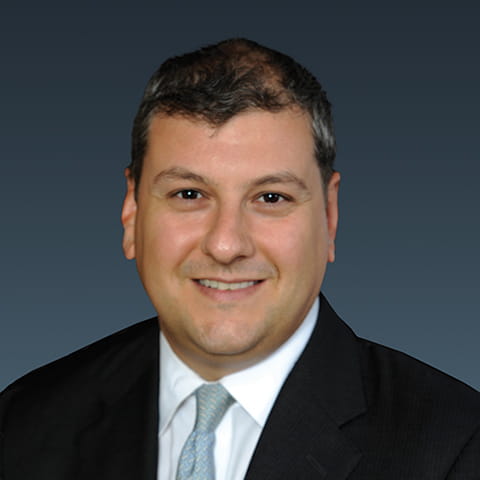Our solutions are tailored to each client’s strategic business drivers, technologies, corporate structure, and culture.
Alternative investment funds: 2025 regulatory, economic, and fundraising outlook
What’s ahead for private equity, private credit, hedge funds, and other alternative investments? Explore our regulatory, economic, and fundraising outlook.
As we embark on a new year and the start of a new administration, fund managers across the alternative investment industry should be looking ahead to anticipate changes and prepare for shifting priorities.
CohnReznick recently gathered industry leaders and advisors for our annual Alternative Investment Fund Summit, exploring current trends, key questions, and recommendations for moving forward in private equity, private credit, hedge funds, and more.
The kickoff “Fireside chat,” featuring CohnReznick’s Jeremy Swan and Preqin Research Insights’ Nicholas Mairone, provided a comprehensive overview of the evolving regulatory and economic landscape for the alternative investment industry.
The panelists expressed overall optimism about a more predictable regulatory environment for alternative investment managers over the next four years, allowing managers to focus on growth and investment opportunities. However, uncertainty remains, with the impact of potential tariffs and changes in the rate environment as key factors.
Read on for top takeaways on the regulatory, economic, and fundraising outlook for alternative investment fund managers, and contact our team to continue the conversation.
Regulatory outlook
- A new administration, a different approach. The panelists discussed the possible implications of the new administration, characterized by a Republican-controlled Senate and a narrowly Republican-controlled House. President Trump’s views on regulation differ significantly from those of the previous administration, which was marked by extensive regulatory initiatives under former SEC Chair Gary Gensler. The new administration is expected to halt or cancel many of these initiatives, including cyber risk and incident disclosures, climate disclosures, and changes to equity market auctions.
- Private fund rules and SEC examination priorities. Despite the overruling last year of the private fund rules, the SEC is expected to continue to focus on areas including LP disclosures and reporting through its examination process. However, the panelists noted that the House Financial Services Committee, now under Republican control, is likely to push back against using the exam process as a regulatory function (regulating through litigation), and this shift is expected to reduce the SEC’s ability to enforce regulations through examinations.
- Market-driven compliance and reporting. The discussion highlighted the role of limited partners (LPs) in driving compliance and reporting standards. Large LPs are increasingly demanding transparency and institutional experience from fund managers, and this demand is leading to the adoption of standardized reporting templates, such as the ILPA template, even in the absence of formal regulatory requirements. The panelists emphasized that market dynamics, rather than government enforcement, should drive reporting standards.
Economic and sector outlook
- Impact of tariffs. The panelists discussed the potential impact of proposed tariffs on the economy and the alternative investment landscape. The impact will vary depending on the type of fund and the geographic focus of investments; industrial assets, for example, may become more appealing if tariffs allow for increased pricing power.
- That said: While tariffs could lead to a one-time price level adjustment, the overall rate environment is seen as more critical to deal flow and investment opportunities. The panelists noted that despite recent inflationary pressures, the economy is growing, valuations are robust, and deal flow is picking up.
- Investing in technology: AI vs. digital assets. Weighing the potential impacts of artificial intelligence (AI) and digital assets on the alternative investment industry, the panelists concluded that AI’s impact is likely to be broader and more immediate. AI is driving significant investment in data centers and technology infrastructure; the CHIPS and Science Act has facilitated substantial investments in states such as Arizona and Wisconsin; and the breadth of AI’s impact spans various sectors, including real estate and tech businesses. While digital assets present opportunities, they remain a niche market with limited spillover into traditional financial services. The regulatory environment for digital assets is still evolving, and widespread adoption will take time.
Fundraising trends and market outlook
- Consolidation of capital among larger, more experienced managers. The panelists noted that a significant portion of funds raised in the private debt sector went to the Top 25 largest funds. This trend is driven by the previously-mentioned LP preference for transparency and institutional experience, which larger managers tend to be better equipped to provide.
- New fund launches down. The panelists highlighted that the hedge fund market has experienced net outflows for several years, and this trend is expected to continue. Investors are increasingly shifting allocations from hedge funds to private equity and other asset classes. The market is becoming bifurcated, with investors opting either for low-fee public vehicles or traditional private equity investments. As a result, fewer hedge fund managers are entering the market.
- Private equity and private credit on the rise. Despite a challenging market environment in 2023, private equity fundraising reached new highs. The panelists expect private equity fundraising to increase slightly in 2025 compared to 2024, though at a modest growth rate. Private credit has also experienced explosive growth, with a focus on consolidation and experienced managers. LPs appear to be treating private credit more like private bond funds, seeking stability and predictable returns.
- Asset class-specific insights
- The primary challenge for hedge funds is the net outflow of assets. While asset valuations have grown, investor withdrawals remain a concern. There is increasing differentiation and competition within the hedge fund space, with multi-strategy funds gaining traction. Traditional hedge funds continue to explore opportunities in private credit.
- Private equity allocations are being reassessed by large pensions and institutional investors. With public equity markets recovering, there is a debate about the appropriate level of private equity exposure. The trend toward diversification within private markets is expected to continue, with investors seeking a balanced portfolio across different asset classes. The private credit market is characterized by consolidation, with large fund managers acquiring smaller firms. This trend is leading to the rise of mega funds, particularly in direct lending. New managers entering the direct lending space face significant competition from established players with economies of scale.
In conclusion
As demonstrated by our panelists’ insights, the alternative investment industry faces a dynamic and evolving landscape in 2025. It will be critical to adapt to regulatory changes, monitor the impact of tariffs on investment strategies, and create differentiation in a competitive market. Fund managers must prioritize transparency, institutional experience, and strategic diversification to successfully navigate both the challenges and the opportunities of 2025 and beyond.
Contact
Let’s start a conversation about your company’s strategic goals and vision for the future.
Please fill all required fields*
Please verify your information and check to see if all require fields have been filled in.
Related services
This has been prepared for information purposes and general guidance only and does not constitute legal or professional advice. You should not act upon the information contained in this publication without obtaining specific professional advice. No representation or warranty (express or implied) is made as to the accuracy or completeness of the information contained in this publication, and CohnReznick, its partners, employees and agents accept no liability, and disclaim all responsibility, for the consequences of you or anyone else acting, or refraining to act, in reliance on the information contained in this publication or for any decision based on it.














